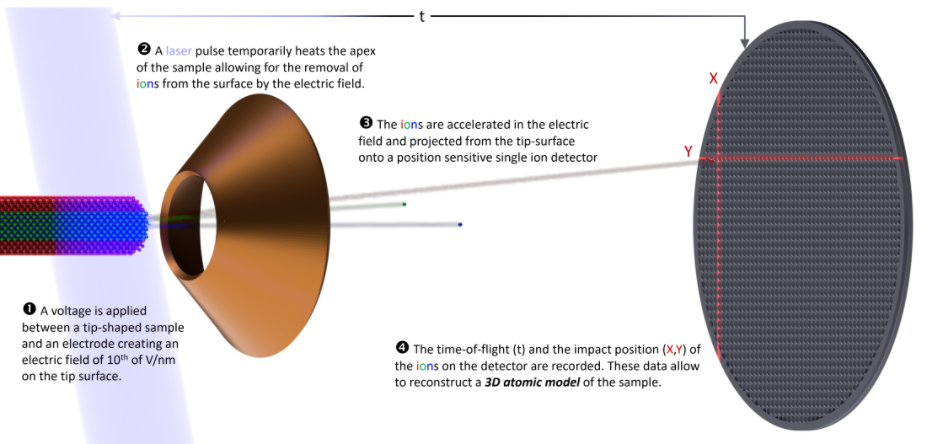Atom Probe Tomography
Atom Probe Tomography (APT) is a method to map the atomic constituents of a material in three dimensions. It progresses
by successively projecting atoms as ions from the surface of a tip-shaped sample onto a position-sensitive single
ion detector. During the measurements process, the tip-shaped sample is disassembled using a DC electric field (1) superposed with field – or laser pulses (2) to trigger the removal or evaporation of single ions from the tip’s surface (3). The ions are detected by a position-sensitive single ion detector that is typically one million times the size of the tip (4). Typical dimensions for the tip are on the order of 10-100 nm while typical dimensions for the detector are on the order of 1-10 cm. The flightpath between the tip and the detector is also typically several 10 cm long.

The data acquired during the experiment are the two-dimensional impact positions of each ion on the detector, the order off the ions’ arrivals at the detector, the voltage power applied to the tip and the time-of-flight of each ion between the tip surface and the detector.
The mass-to-charge ratio of each detected ion can be deduced from the applied voltage and its time-of-flight. Furthermore, the order of the ions’ arrivals can be combined with the two-dimensional impact positions on the detector and the assumption that ions are originating from a hemispherical tip surface, to create a three-dimensional model with the approximate positions of each ion inside the tip.
APT hence allows to map the local chemistry inside the tip-shaped samples in three-dimensions with a spatial resolution typically better than 1 nm.
Highlights of Atom Probe Tomography & Field Ion Microscopy
-
1967-68
-
1988-1993
-
1994-2000
© All rights reserved. PolyAPT 2022.
